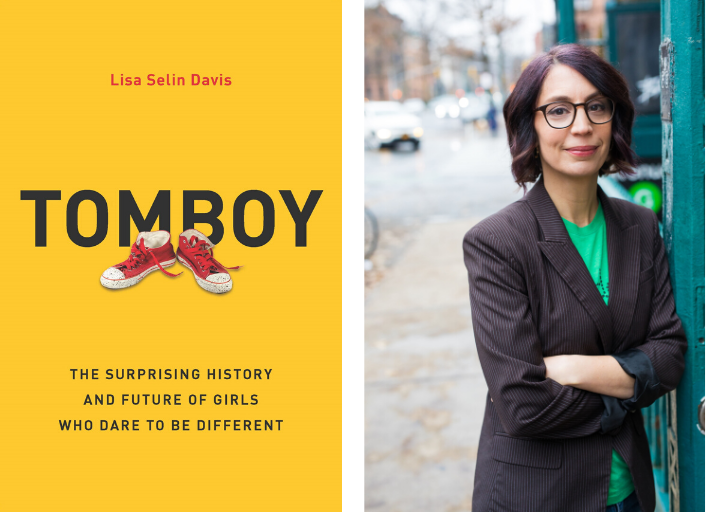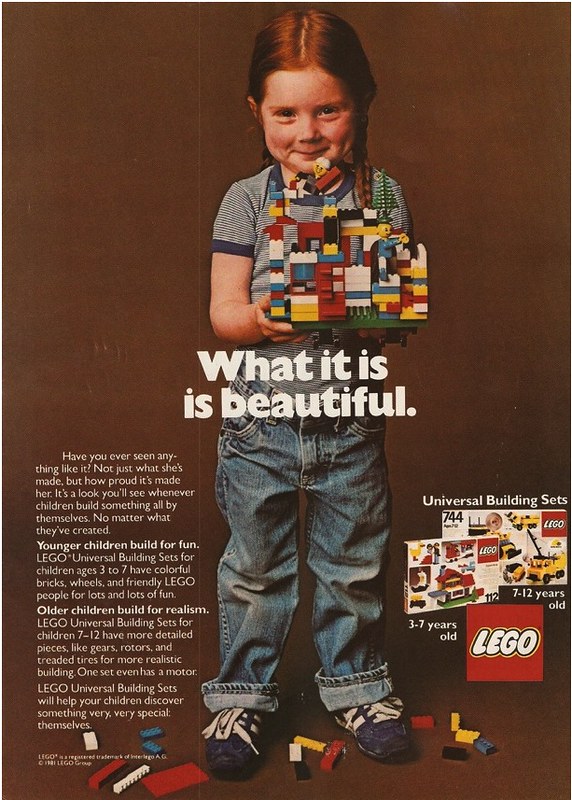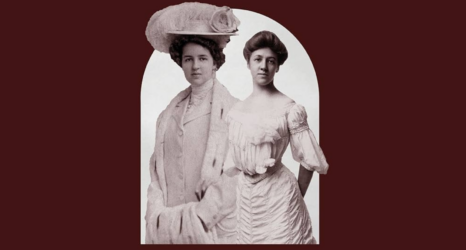The following is an excerpt from “Tomboy: The Surprising History and Future of Girls Who Dare to Be Different” (August 2020), by Lisa Selin Davis.

“Why are there so many tomboys in this movie?” my daughter asked me. We were watching the original 1976 “Freaky Friday” starring Jodie Foster, who, along with her friends, was sporting tube socks, athletic shorts and a T-shirt.
“Those aren’t necessarily tomboys,” I replied. “That’s just how lots of girls dressed in the 1970s and early ’80s.”
Sure, there were plenty of highly feminine girls’ fashions—the Gunne Sax dresses and lacy Lanz nightgowns of my childhood heart’s desire—but many of us wore outfits like those of the “Freaky Friday” girls. Lots of boys had bowl haircuts; girls had Dorothy Hamill haircuts. Turns out, they were the same haircut!
In the 1980 movie “Little Darlings,” tomboy icon Kristy McNichol and her love interest Matt Dillon wear the same T-shirts and jeans and even have the same feathered, shoulder-length hair. Tomboys were common, in life and in the media.
One of the most famous tomboy images of that era is a 1981 ad for LEGO. It features a girl in dungarees and a striped shirt, her long red hair in braids, holding up the colorful design she made herself. The tagline—“What it is is beautiful”—and the copy made no mention of gender, and the plastic bricks had no gender color-coding.

Today, so much of childhood is divided into pink and blue; there are even “girl” LEGO Friends and “boy” LEGO helicopter sets. So why were so many girls dressed like boys, and encouraged to play with and like them, when I was a kid? Why were the 1970s a tomboy heyday?
Though tomboys were present in the media and culture in the 1950s and early 60s, from Scout Finch to Gidget, it was a time of telling women who’d been liberated by WWII to return to their restrictive gender roles. Rosie the Riveters had shown their muscles in rolled-up shirtsleeves, but traded them for highly feminine 50s fashions, traded working outside the home to the new role of homemaker.
Then came sexism and the sexual revolution. With the rise of the counterculture came the questioning and rejection of gender roles. For adult women, claiming to have been a tomboy meant renouncing the restrictive expectations of their childhoods. Some 78 percent of college-aged women in the 1970s said they’d been tomboys growing up, because it expressed their feminism. It was a way of saying they were above the low bar society held them to, and always had been.
Baby boomers, the first generation raised with highly gendered young kids’ clothes, the first real taste of the pink/blue divide, now became members of the procreating counter-culture, poised to reject the gender stratification that had been imposed on them. Some partook of “nonsexist parenting,” the idea that girls deserved parity with boys and access to their worlds. Raising daughters to reject gender roles meant deliberately rearing a generation of tomboys.
As historian Jo B. Paoletti wrote,
“In the mid-1970s, the objective of feminist parents was to empower girls by stripping their clothing of every last vestige of traditional femininity and replacing the ideal little lady of their childhood with the tomboy.”
That ideology permeated the consumer marketplace. Sears catalogs in the 1970s marketed many styles of clothes to both boys and girls, offering almost no pink toddler clothing. There were boys’-to-girls’ size conversion charts: How much clearer could the message be that little girls could reach over the line into the land of boys?
Toys followed the same pattern. Less than 2 percent of the toys in those catalogs were marketed to a specific gender in the seventies. There were lots of toy ads showing girls as doctors and pilots (though not with boys as ballet dancers and nurses). Science- and domestic-themed toys were sold in many colors, with images of boys and girls in ads working and playing together.
There were still lots of dolls, but among the Barbies appeared a crop of tomboys. Mattel’s Hug’n Talk dolls from the seventies featured a tomboy with short red hair, green overalls, and an orange- and-red striped shirt. The Topper Go-Go doll line showcased a tomboy baseball player with freckles, a dirty face, messy clothes, and a baseball hat. Remco’s Tumbling Tomboy had a blond, pig-tailed girl in plaid pants as well as an African American version in the late 1960s, a rarity in the world of tomboy media and toys, which was so interwoven with whiteness.
Then again, Mattel’s 1970s line the Honey Hill Bunch was a racially diverse group of girl cloth dolls, most of whom were wearing pants and had accessories ranging from guitars to purses.
And of course there were the famous LEGO tomboy ads, which were the brainchild of one of advertising’s rare female creative directors, Judy Lotas.
“I had two young daughters at the time,” Lotas told me.
Whenever she’d go up to Connecticut to meet with the LEGO folks at headquarters, she’d come back with armloads of LEGO bricks and her daughters would not just build things out of them, but they’d present the finished products to her proudly. Lotas convinced LEGO that this should be the campaign: kids crafting their own constructions and displaying them with pride.
But she had to fight to feature girls prominently in the ads. “It’s not just boys,” she told LEGO executives. “Girls do it, too.”
She knew this because she’d seen it in her own home; her daughters were just as into LEGO bricks as the boys were.
Lotas was adamant that boys and girls be equally represented in the ads, but she told the child models to show up in their own clothes. So that little girl, the icon of the 1970s and ’80s tomboy look? That’s just what she was wearing because so many little girls dressed that way. While one girl wears lavender overalls and a pink turtleneck in the other print ads in the campaign, most of the kids’ clothes are interchangeable, as are their creations.
One reason so many kids looked like Jodie Foster or Kristy McNichol in my childhood, even me, is that wearing “boys’” clothes was a readily available and uncontroversial option. Tomboys were encouraged, and easily clothed. And toys and media that tried to represent the vast experience of girlhood had a tomboy, or several, among them. One look at skimpy-outfitted, high- heeled Bratz dolls and you can see how much that later changed.
When I looked back to see how these gendered waves had crested and receded, it seemed that war and the economy had played a leading role. During and after the Civil War in the mid-1800s, when women assumed greater power in the economy, the first major movement of tomboyism began.
After World War I, the flapper movement took hold, offering more masculine, corset- free clothes for liberated women. World War II promoted Rosie the Riveters. During each war, economic times were tight, and women filled men’s roles while they went off to fight: War begat feminism. And often the children of feminists were raised as tomboys.
But as money flowed into the economy and the middle classes surged later in the twentieth century, more items were gendered. This served two purposes: to sell twice as much stuff, and to push women back into their places. When each tomboy heyday ended, childhood became gendered as never before.





